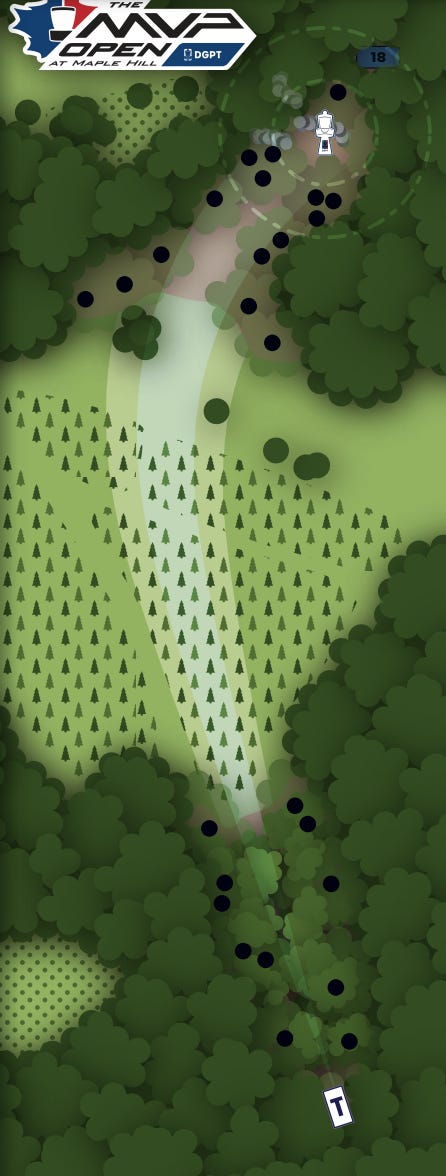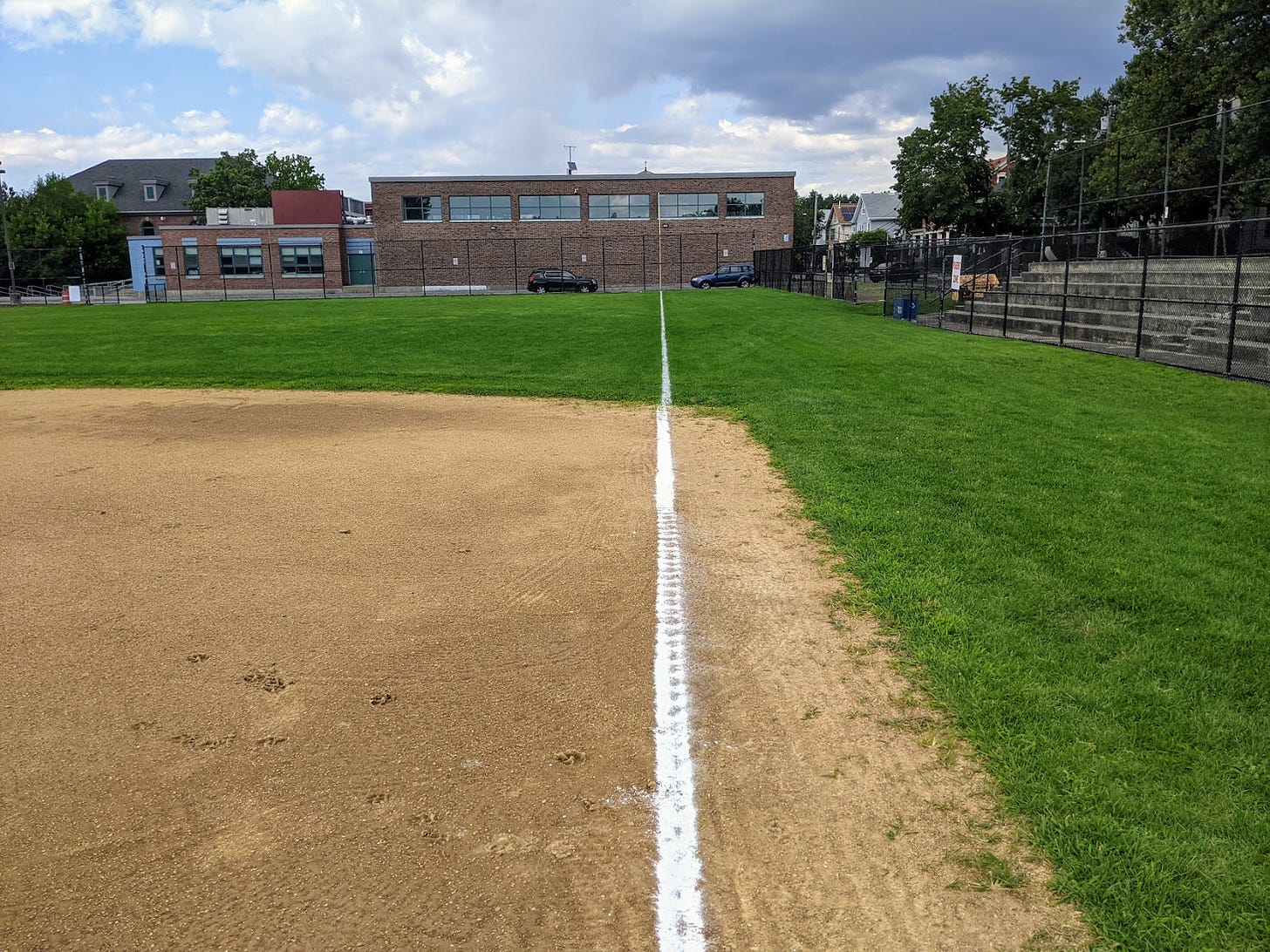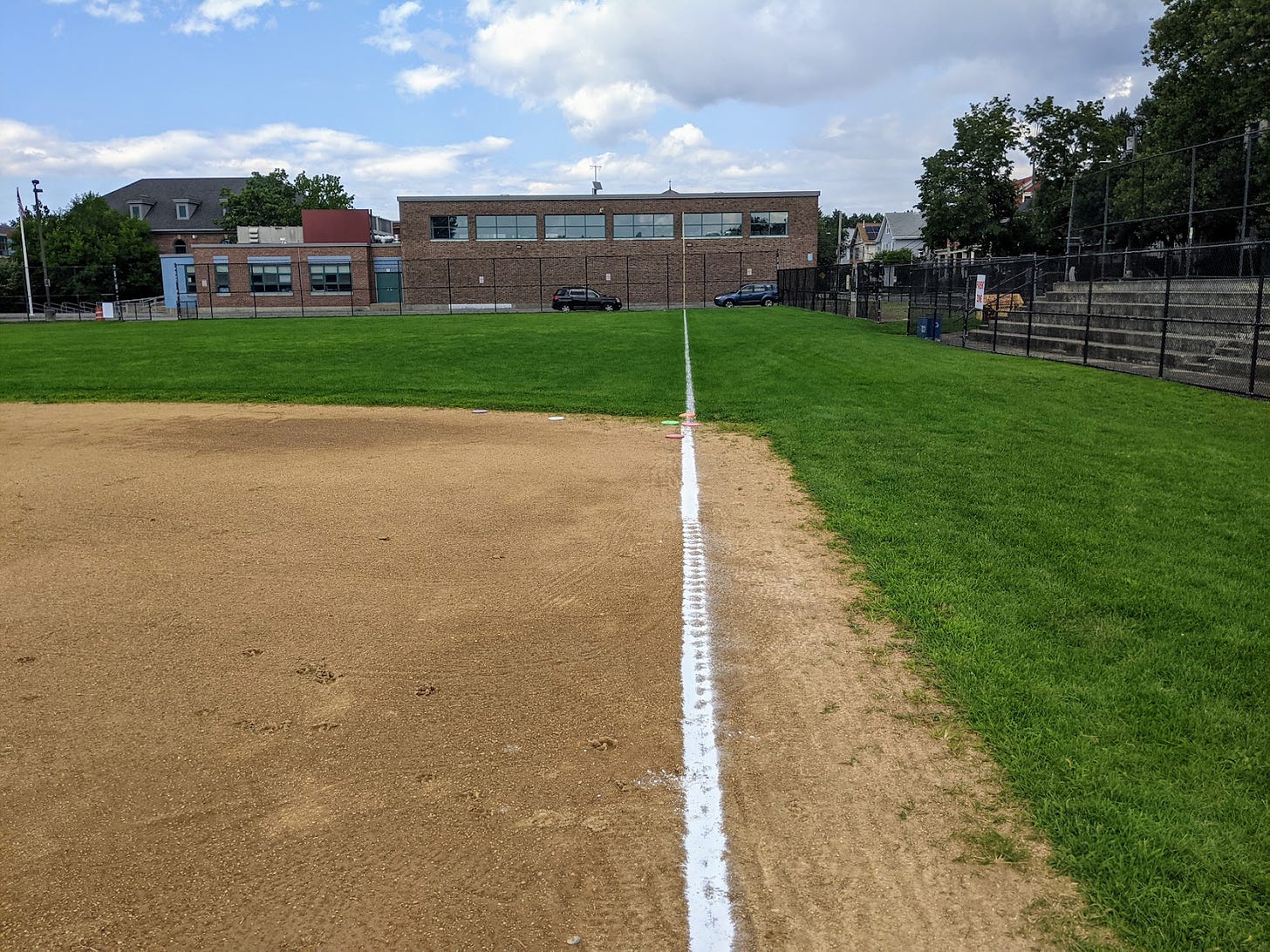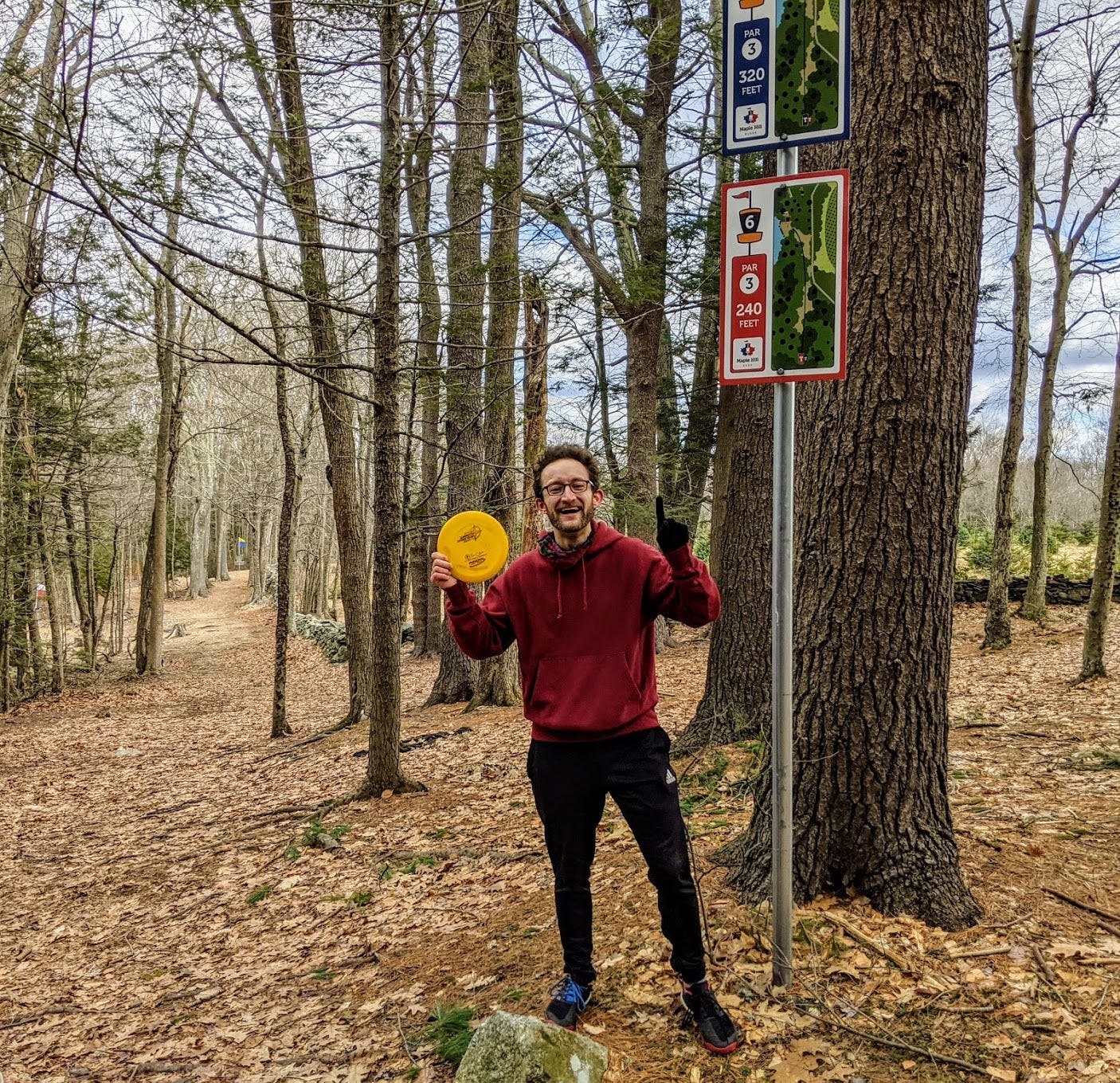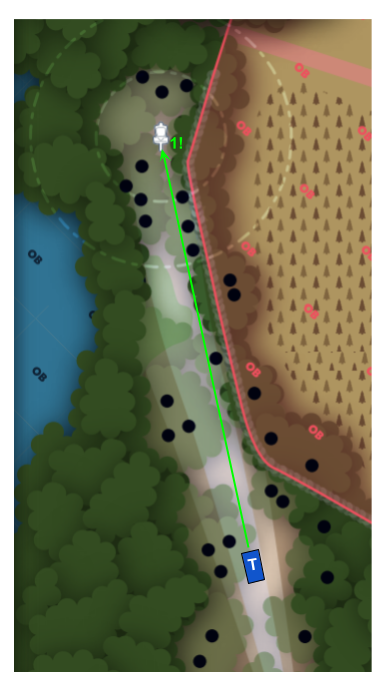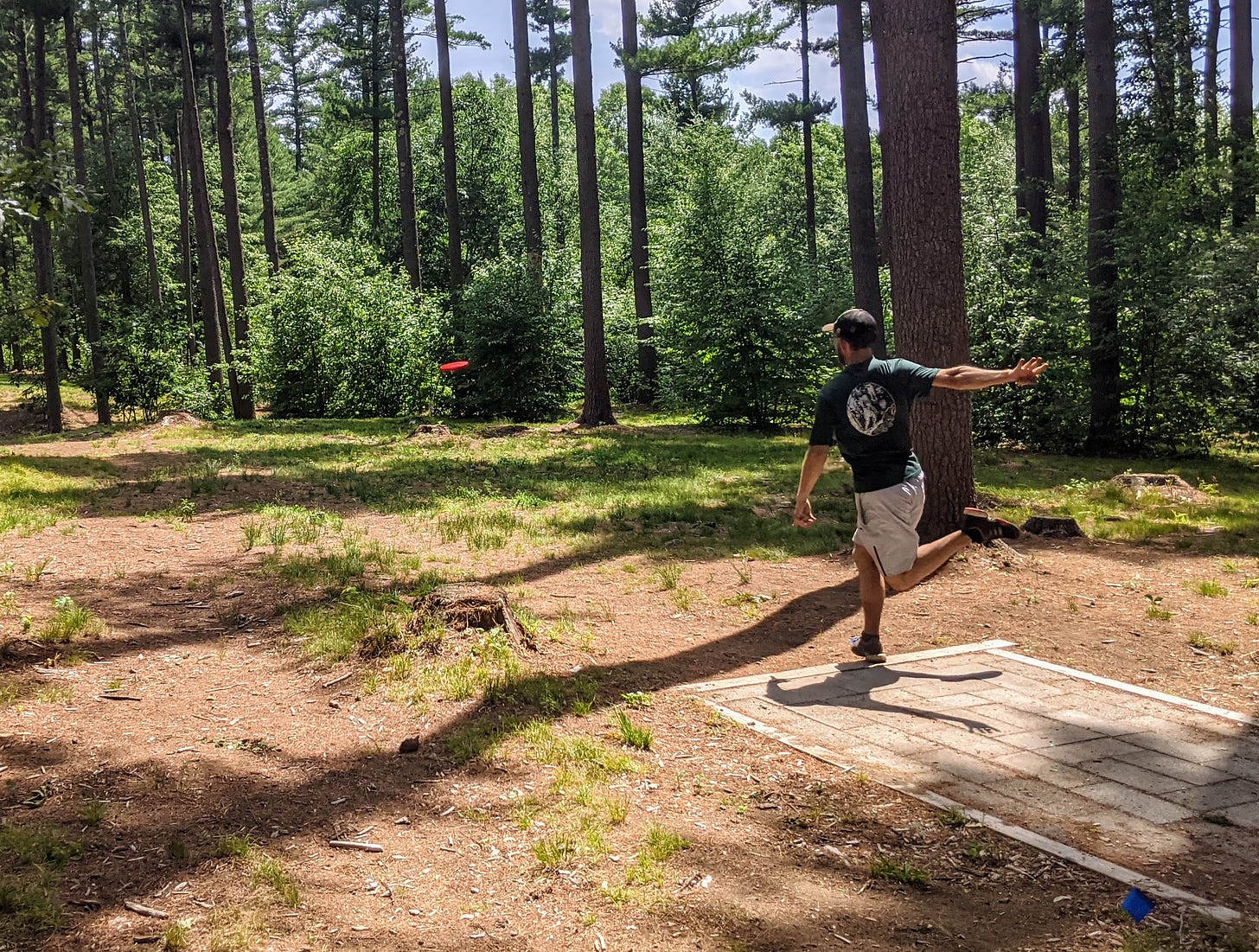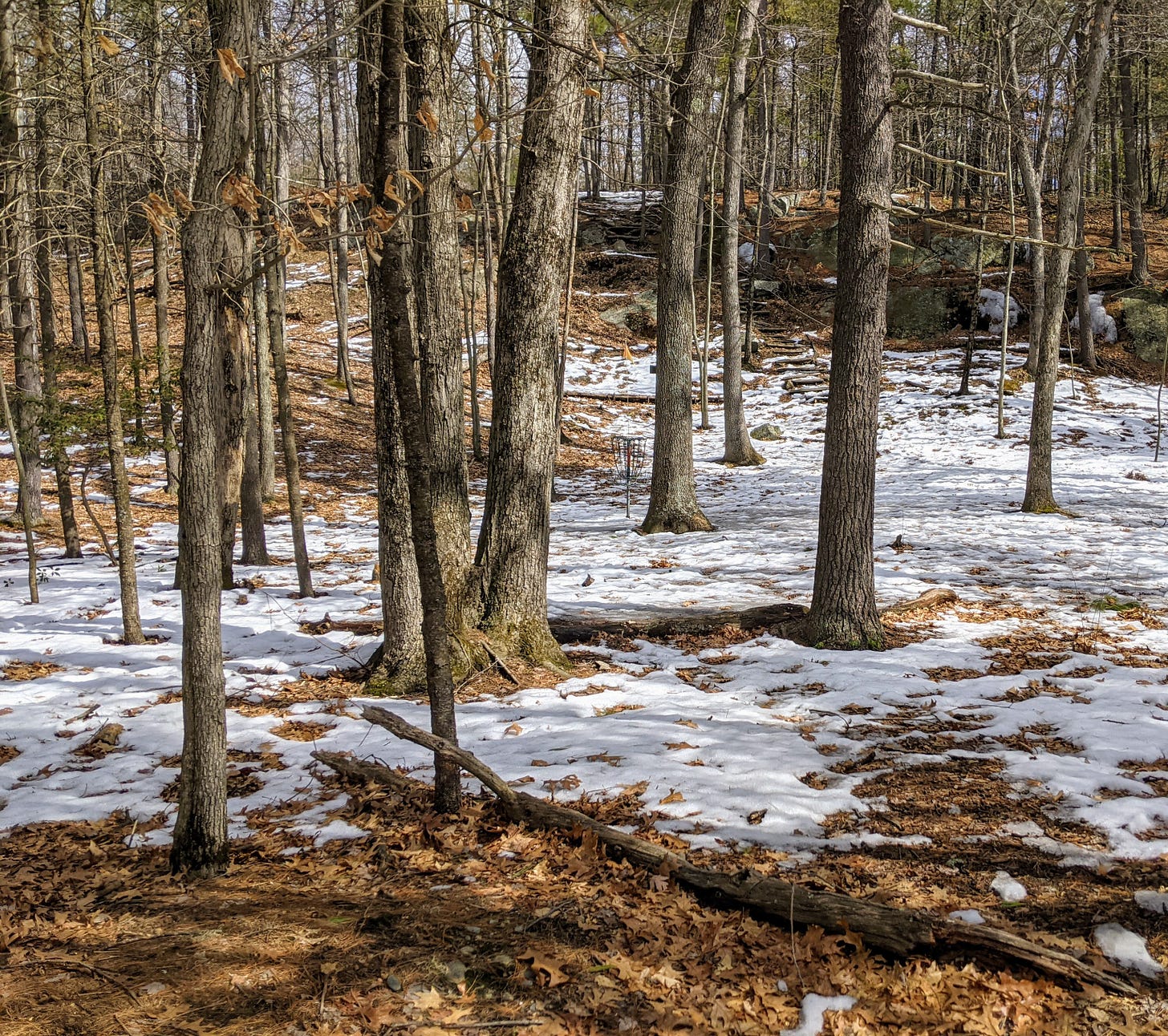Note: you can find the complete collection of these posts at Notes from Bogeyland.
A flying disc is not a baseball: disc physics 1
(This is the beginning of an occasional series on the physics of disc golf, starting with a simple explanation of why you don’t need to throw the disc up high (usually). We may not get into all the details now, but we’ll do so later on.)
Knowledge of how and why a disc flies will not make you a better disc golfer: only practice and experimentation can do that. But understanding the physics of disc flight may provide geeky pleasure nevertheless.
My most common disc-throwing mistake
My early disc golf shots went sharply up, took a hard left, and landed about 50 feet away, like this:
That’s mainly because I threw it up at an angle to get it to fly to the target. That’s what you’d do with a baseball, but a disc is not a baseball. A disc is a wing. While both a baseball and a frisbee have spin, a frisbee generates far more lift compared to a baseball, so you don’t need to loft it high to get it to travel far.
What a baseball does
If you throw a baseball at a 45 degree angle it will go farther than if you throw it flat, parallel to the ground:
What a disc does
But if you do the same thing with a disc, you’ll get the opposite result. That’s because the disc generates lift better if it’s roughly parallel to the direction of travel. If it gets too nose-up, then it stalls (like an airplane wing can stall at too high an angle of attack). When the disc stalls, the interaction of the lift and the spin make it fade to the left (for a right-hand backhand throw). So you want to delay the stall as long as possible to get the farthest, straightest flight out of a particular disc.
This is what happens to me when I throw the disc too high (top view):
If you’re left-handed, you’re likely to see this for a backhand shot thrown too high:
The question I find myself asking is “Why do they do that?”
A flying disc is a simple wing with a twist: it spins. If you throw a disc without any spin, it will tumble and not fly very far. The spin adds stability. It also changes the way the disc flies compared to a non-spinning wing.
Disc golf discs are more like paper airplanes than like baseballs. If you throw them up sharply, they’ll stall, losing their lift, and start falling back to the ground. As they fall, the interaction between the lift and the spin makes them turn hard left (or hard right if you throw a left-handed backhand). Here’s a side view of a lofted disc’s flight path:
Avoiding excessive fade
If you want to throw a straighter shot, trust the disc to provide the lift -- you don’t need to loft it too high. And you definitely don’t want it to leave your hand with the nose pointed too far upwards. This is more like it:
The disc, acting as a wing, flies farther without stalling, and the spin stabilizes the disc as it flies. The disc may still fade to the left near the end of its flight, but it will go farther before it does so. Also, because it’s closer to the ground, it won’t fade as far to the left:
If you aim properly, you should get much closer to the target with a flat throw (top view):
Fade can be your friend
Sometimes however, a fade to the left or right is just what you want:
My shot on this hole often goes left too early (green arrow), probably because this is a downhill shot. I need to send the disc on more of a downhill path, otherwise it stalls out and fades hard to the left before it gets all the way down the hill.
Next time: what causes the late fade?
